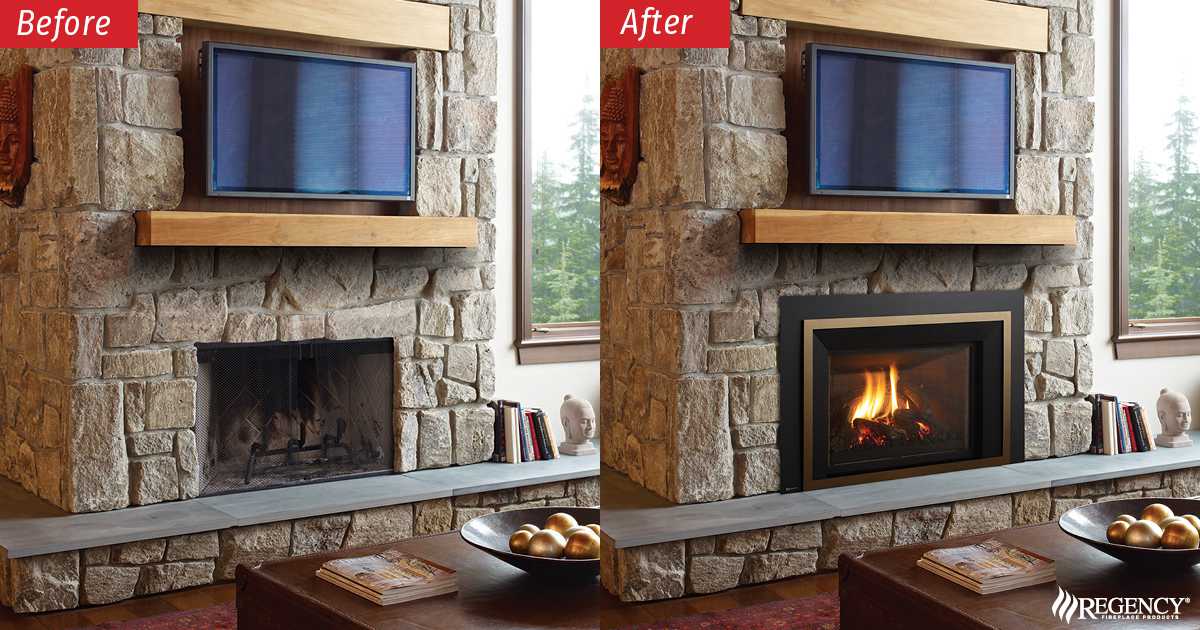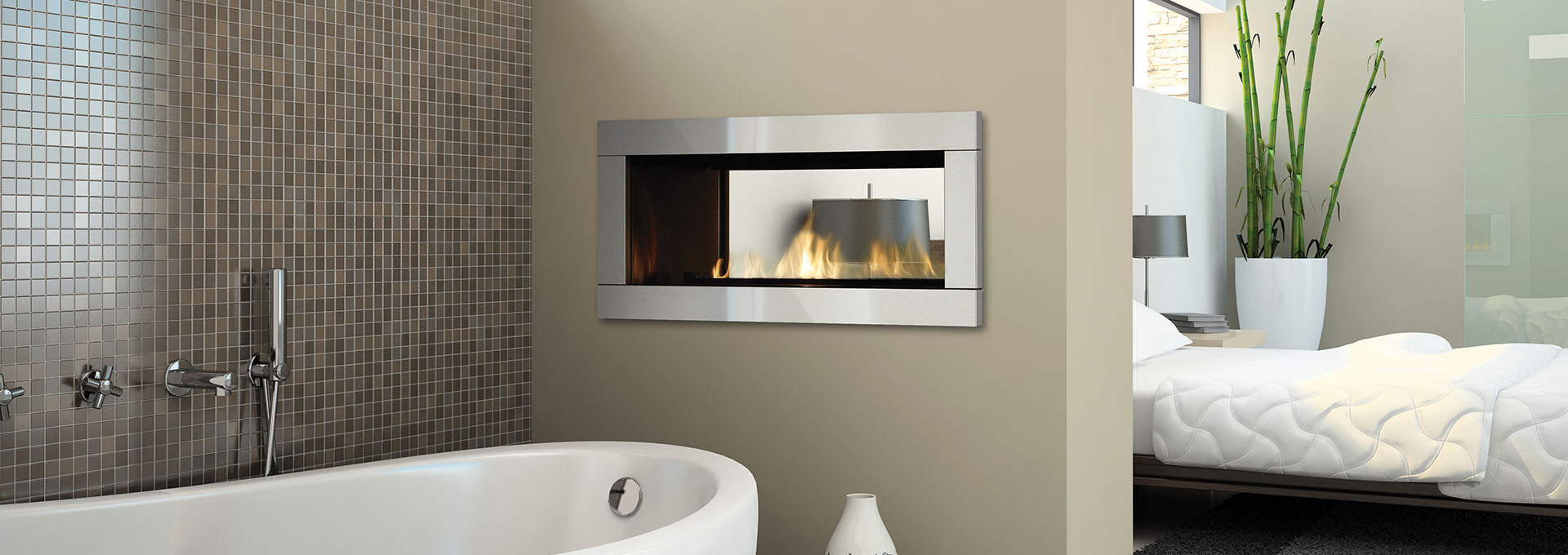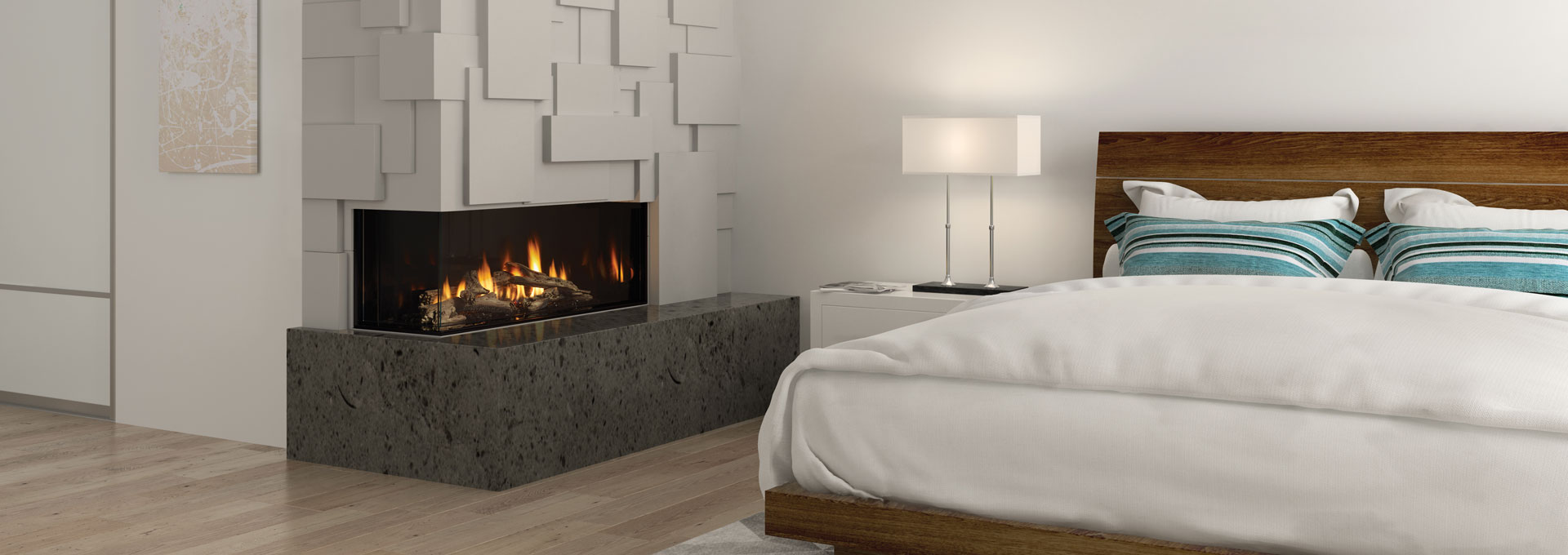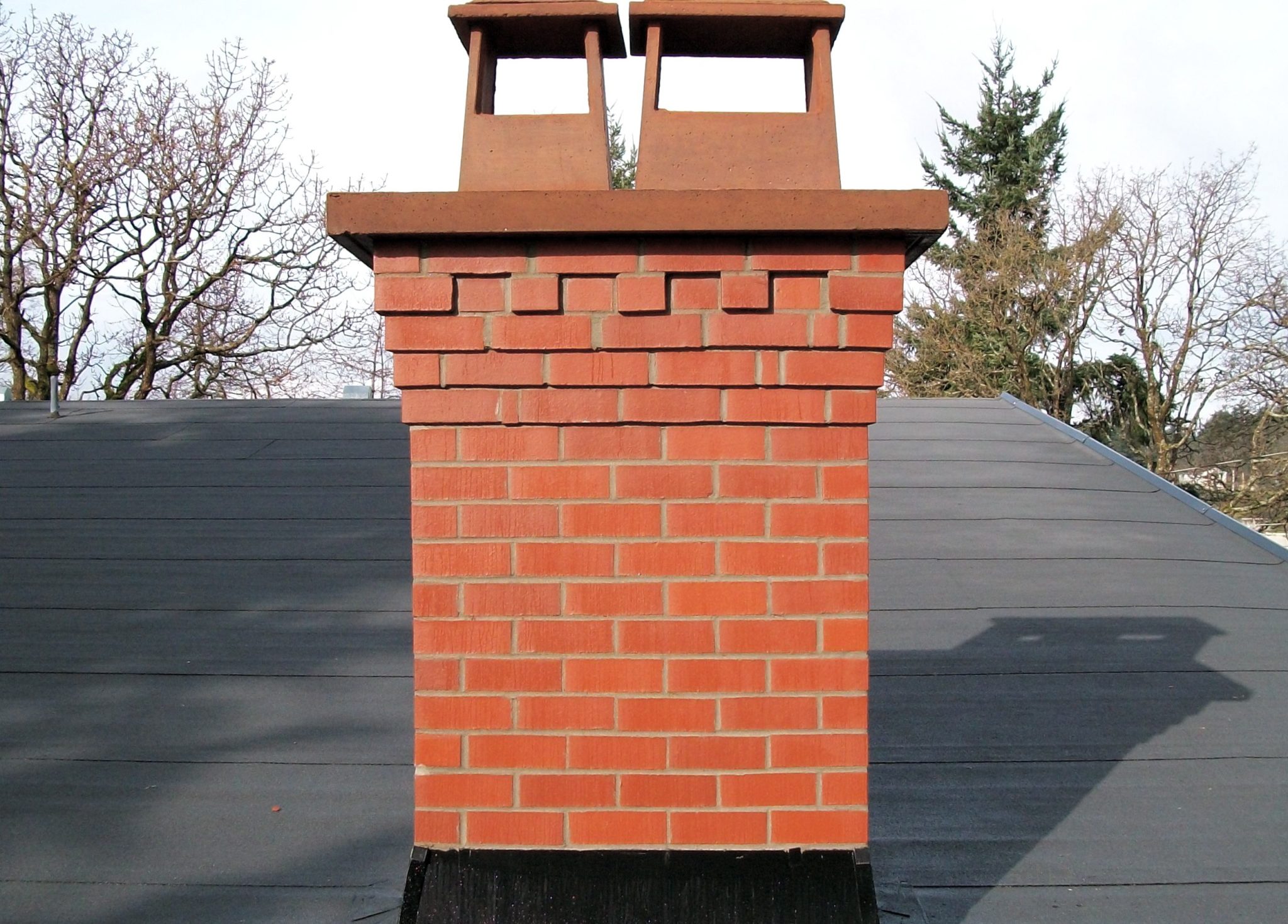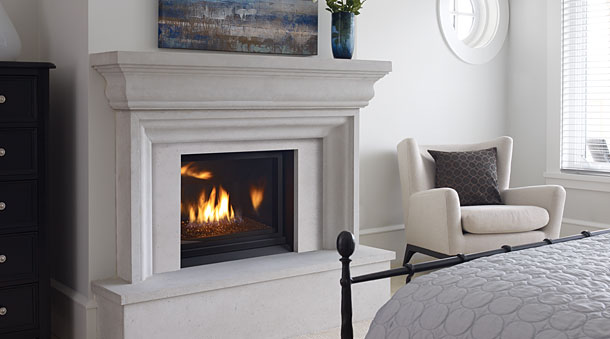Please enjoy this information from Regency, a product and brand we are proud to support and deal.
#1 Give your fireplace a purpose
Once installed, your new fireplace has an important job to do and that’s what you need to keep in mind while shopping. There are many reasons to start a fireplace renovation:
• To update the look of a room
• To heat a room(s)
• To upgrade an inefficient fireplace (search government rebates & incentives)
• To reduce monthly heating bills by up to 20-40% (learn more)
• All of the above!
.aspx) Pictured Above: B36XTE traditional gas fireplace
Pictured Above: B36XTE traditional gas fireplace
#2 Understand what type of fireplace you need
Are you shopping for an insert, a new fireplace or a stove?
Fireplace Inserts
Many people who think they need a new fireplace actually need a fireplace insert. Inserts install quickly into existing masonry fireplace openings and they offer many benefits. In addition to heating, fireplace inserts create ambience, stop cold drafts, improve indoor air quality, instantly update the look of a room, and they can even reduce your home heating bill. Available in multiple styles and sizes, all you have to do is decide whether you want a gas insert, wood insert or pellet insert.
Before: An old, open masonry fireplace After: The same fireplace with an LRI6E gas insert installed
New Fireplaces
Shop for a new fireplace if you’re building a new home or installing a fireplace where there isn’t one already. Direct vent technology makes it easy to add a fireplace in any room of your home. New fireplaces are available in modern, contemporary, traditional and classic styles.
Shop for a new fireplace if you’re building a new home or adding a fireplace to a room where there isn’t one. Pictured Above: Regency Horizon HZ42STE contemporary gas fireplace
Stoves
Powerful heat and stand-up style define the stove. Today, the best wood stoves, gas stoves and pellet stoves can be customized to fit your personal style. If maximum efficiency and minimum maintenance cost is important to you, shop for a stove that has thick, durable hinges and an adjustable door latch.
Pictured Above: Alterra CS1200 wood stove
#3 Pick a fireplace fuel
Natural Gas
Natural gas is the cleanest burning fossil fuel. Choose natural gas if you want a clean, low maintenance fireplace with a thermostat that can be adjusted instantly via remote control. #InsiderTip: Natural gas fireplaces that have ceramic burners, ceramic glass viewing windows and variable speed blowers disperse the most heat.
If you don’t have a natural gas line, but you want the convenience of a natural gas fireplace, consider shopping for a gas fireplace that has a propane conversion kit. Many Regency gas fireplaces, stoves and inserts can be converted to propane.
Choose natural gas if you want a clean, low maintenance fireplace that can be adjusted via remote control. Pictured Above: City SeriesSan Francisco Bay designer gas fireplace
Wood
When sustainably harvested, wood is a renewable, carbon neutral fuel source. Choose wood if you love the crackling sound and dynamic ambience of a real wood fire, and you have a place to store wood logs. New technology has revolutionized wood burning efficiency and many governments now offer rebates and incentives to encourage home owners to upgrade to environmentally efficient wood fireplaces, wood stoves and wood inserts. There has never been a better time to upgrade your fireplace!
All Regency wood burning fireplaces, stoves and inserts meet or exceed CSA and EPA environmental certification standards. Pictured Above: CI2600 wood insert
Pellets
Pellets are a great choice if you want the convenience of a gas fireplace, but you prefer a renewable, carbon neutral fuel. Pellets are small, uniform pieces of compressed organic material that produce heat and flame when burned. When shopping, notice that some pellet inserts and pellet stoves only burn wood pellets, while others like the GC60 and GCI60, can burn pellets made of wood, bark, sawdust, corn, wheat or barley. #InsiderTip: choosing higher quality pellets will reduce the amount of maintenance your pellet stove or pellet insert will require, and it will reduce any dust when adding more pellets into the hopper. If you want to know more about pellet fireplace inserts this article is for you.
Choose pellet if you want the convenience of a gas fireplace, but you prefer a renewable, carbon neutral fuel source. Pictured Above: GF55 pellet stove
Electricity
Electric fireplaces produce ambiance, but are fairly inefficient heaters. If you are looking for heat from your fireplace, other fuel types are a better option. It all comes back to tip #1, what is the purpose of the fireplace?
#4 Take a few measurements
A good fireplace dealer will ask you what size room your new fireplace will live in, and if you’re shopping for a fireplace insert, he/she will also ask you about the size of your existing masonry fireplace opening. Installing the wrong large fireplace into a small room can make you uncomfortably hot, while installing the wrong small fireplace into a large room can make you shiver. Also consider the style of your new fireplace relative to the style and size of the room. Going with a unit that is too big or too small on a wall can make your fireplace look out of place. A long wall with longer accent features may look better with a linear fireplace than a portrait fireplace.
Not sure how to measure your fireplace? This brochure has the worksheet you need (last page).
Pictured Above: LRI3E Compact Gas Insert
#5 Visualize your installed fireplace
Do you want to wallpaper to the edge of your fireplace or place a TV or art directly above your fireplace without a mantle? If so, you need a designer gas fireplace like City Series. Before you start shopping, visualize what you want your finished fireplace to look like. You don’t need to have all the answers, but sharing your final vision with your local fireplace dealer will help him/her find you a fireplace that will meet your goals.
#6 Where to buy a fireplace:
Authorized Fireplace Dealers ✔ YES
The best place to buy a fireplace is from your authorized fireplace dealer. Visiting a fireplace dealer is the only way you can compare the physical difference between reputable fireplace brands, like flame picture and build quality. Visiting a fireplace dealer is also the only place you’ll be able to speak to a fireplace expert. A fireplace is a heating appliance and its efficiency and safety are contingent upon the correct installation. A reputable fireplace dealer will install your fireplace or work with a licensed contractor who will install your fireplace to ensure it operates correctly. Purchasing a fireplace online and installing yourself is a considerable risk and generally not recommended.
Online ✘ NO
When you buy a fireplace online you risk being disappointed by the quality, performance and safety of your fireplace, and you miss out on the valuable expertise your local fireplace dealer can provide. Further, quality crafted fireplaces are very heavy, if you need to ship yours back it won’t be cheap!
Big Box Stores ✘ NO
Buying a fireplace at the same time you buy your groceries might sound convenient, but it could cost you time and money in the long run. Unless your local big box store sells quality crafted fireplaces and staffs a dedicated, knowledgeable fireplace expert, steer clear.
Used Product Websites ✘ NO
Safety is the most important factor when you purchase a fireplace. Buying a fireplace from a second-hand website like Craigslist or Kijiji is not worth the risk; it’s impossible to know the full history of the product. Further, used fireplaces aren’t warrantied, so if something goes wrong with your fireplace you’ll be on the hook for the entire cost to repair or replace.

